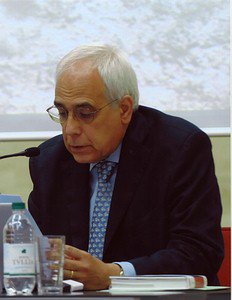Gdańsk 1980. Solidarność
By Sandro Chierici, Annalia Guglielmi, Daria Rescaldani.
Photographs by Chris Niedenthal.
With the contribution of KARTA Archive
This exhibition is set in the context of a review of the history of the late 20th century, a subject which has previously twice featured at the Meeting (Budapest 1956 and Prague 1968) and which evokes again, during this historic period, the recurrence of the conflict between the liberty of man and the ideology of power, frequently with dramatic and violent implications.
The wave of strikes which began in the Gdansk shipyards in August 1980, soon to spread to several other factories throughout almost all of Poland, caused a new word to break into European history: solidarność, solidarity. This term embodies the absolutely unique spirit which drove the activists of that struggle, and which constitutes the characteristic trait of this event, that quickly expanded its horizons from that of a workers trade-union protest to that of a real people’s movement, which drew together workers, farmers, students and cultural figures.
The Gdansk strike is the singular event within the protracted clash between the Polish people and the oppression of the communist regime which painfully marked the post-war history of Poland. The precedents range from the Poznań revolt in June 1956, to which were linked the Budapest insurrection of the following August, to those of Gdansk in 1970 and 1976. But beyond the rebellion against harsh living conditions, the new factor which emerges in 1980 is a new awareness of the dignity of man and the need for there to be a meaning in ones work so that the individual may survive. As declared by Józef Tischner, “the revolt of the Polish workers in 1980 was a revolt against the pathology of work. What did this pathology of work consist of? Briefly we can say that in Poland we had the phenomenon of work without meaning. . […] Restoring to work its ethical dimension means establishing that work shall have a role in the understanding between men. This is the ethos of work. The ethos of work is to work as beauty is to a work of art. A work of art without beauty is not a work of art. Work which does not foster understanding is not work”.
This conscience would seem to be the most important legacy which the Solidarność events entrust to man today, that which renders the review of this page in history a chance for each of us to deeply examine the way in which we confront in our everyday lives the theme of work, in all its diverse aspects made more evident by the current economic crisis.
The exhibition is organised in five sections: after an Introduction in which is synthetically reviewed the post-war history of the Soviet Union satellite countries, with reference to revolts which were frequently suppressed with violence (Germany 1953, Poland and Hungary 1956, Czechoslovakia 1968, Poland 1970 and 1976), the August 1980 strike is documented along with the birth of Solidarność. A compact portrait gallery of the main protagonists – from Wałęsa to Cardinal Wyszyński, from Tischner to Anna Walentynowicz, the Solidarność leader who recently died tragically along with almost the entire polish state directorate – introduces the documentation of the progressive repression which culminated in the proclamation of the State of War on 13th December 1981. A last section covers Solidarność and ourselves, that involvement which the west, and particularly Italy, experienced with the Polish people: the mobilization, the assistance, the publications, the manifestations of solidarity, testimonies of closeness and gratitude which were to be relived ten years onward on the occasion of the visit of Lech Wałęsa to the Rimini Meeting in 1990.
Sixty photos by Chris Niedenthal, accompanied by approximately 20 images form the Polish historic archives, documents, items and three videos – one on the strike, one on the repression, and one of the encounter with Wałęsa at the 1990 Meeting in Rimini– constitute the exhibition material, which is enhanced by some models of those sites which were the fulcrum of the events – the shipyards entrance, an underground printing press – capable of re-enacting for the visitors a page in history still fresh in the minds of the older generation, while all to be discovered by our youngsters.






